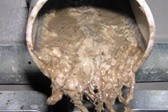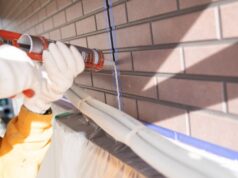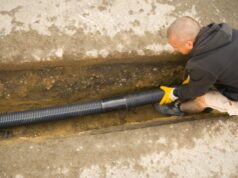
Proper drainage is vital to good hygiene and cleanliness. See how drainage and sewer systems operate, and how they are connected to your home.

In most houses, the drainage system relies on gravity. Every home must have proper drainage that meets Australian building code requirements. Not only is it a legal requirement, but a properly installed drainage system is vital to help control the health risks that come from improperly treated sewage and stagnant water.
How do drainage systems work?
Drainage is the system that conveys water and human waste from the various fixtures (taps, shows, baths, toilets, sinks etc…) into drains from your house, which then drain into your town or city’s main drainage system. Where access to this sort of drain system isn’t available, septic tanks are a sensible alternative.
An effective drainage system must be able to self-clean to ensure that wastewater passes freely through the system to the main sewerage network. This is achieved by making sure that wastewater travels with sufficient velocity through the pipework. Velocity is determined by a combination of the gradient (the falling angle) of the pipe, and by the pipe’s diameter.
Because water-saving fixtures are fast becoming the norm, accuracy in laying drain pipes is becoming far more critical, because there’s less of a flow.
- Don’t cover up that grate you may see sticking up in your garden somewhere. This is an overflow grate, and you should have at least one of them. Overflow grates are positioned so that if there is a major sewerage blockage, the sewage won’t travel back up the system and into the house.
Sanitary Plumbing
Sanitary plumbing links the house’s drainage system to sanitary fitments including taps, basins, baths, showers, laundry tubs, sinks and toilets. Understanding what fixtures will be in place is important when designing sanitary drainage systems. Each fixture has a different flow rate that will affect the sizing of the drainage pipes.
Your drainage system will also have traps; these are plumbing fittings which prevent the poisonous, noxious gases from a sewer line from entering the room in which the fixture is located.
Venting of drains is also necessary to stop a concentration of gas, and to keep the air inside the drain at atmospheric pressure. This is normally achieved either with a stack vents that lead up and out of your home through the ceiling cavity (often called a ‘stink pipe’). Where that’s not possible, drains can be vented using what’s known as an air admittance valve.
Drain grade
Sanitary drainage systems are designed to flow at a rate that prevents the settling and sedimentation of solids (this is the ‘self cleaning’ mechanism). Drains must therefore be laid at a specified slope or grade. Drain grades may be expressed as a ratio. For example, your plumber may refer to the gradient being 1:60.
An appropriate depth of fill over the buried pipes is required too. Your plumber needs to meet certain requirements when it comes to how drainage pipes are laid. If he shorts cuts this process and buries your drainage pipes over building rubble, you may find your driveway or path collapsing in the future. In addition, rubbish sitting over the top of a drainage line will make excavation difficult and more expensive in the future.
Types of sanitary drainage systems
Gravity systems
These traditional sewage disposal systems take advantage of the natural slope of the ground (and consequently the grade of the pipeline) to collect wastewater and take it away from the property. This allows it to flow to the authority sewerage network.
Pumping systems
Where it is not possible to connect the house drainage to the authority’s main by natural gravity, there are other alternatives. In these situations, the house drainage lines are installed to flow to a collection chamber. These can work in a number of ways:
- Pumping raw sewage – This type of system incorporates a submersible sewage pump which conveys the sewage from the chamber via a large diameter pipeline to the authority’s main sewage system.
- Whole-house macerator pumps – This system is fitted with a submersible macerating pump which grinds the waste into slurry. From there, it’s pumped via a smaller diameter pipe and connects to the authority’s sewer main.
- Isolated fittings – macerator pumps – Plumbing fixtures (toilets, basins etc…) are sometimes located in positions where it is not possible to connect the fixtures to the main house drainage lines relying on gravity alone. Basements and extensions on lower level land are good examples of where this is the case. These fixtures can still be installed by employing a proprietary tank and integral macerator pump. They normally have limited capacity (tank size, how far and high they can pump) and convey the slurry via a small sized pipeline to a position and level suitable for drainage in the main household drainage line. These systems sometimes make a bit of noise, but they do work.
- Septic tank / collection chambers – In this type of system, the drainage line connects to a septic tank and after the sewage is naturally treated, it flows into an adjacent collection chamber. A small pump then pushes the fluid via a small diameter pipe to the authority’s sewerage main.
- The choice of drainage system has to be made in conjunction with the relevant sewearage authority before any work begins. Note that all of these alternative solutions require power and therefore an ongoing running cost.
Vacuum systems
Most of us have used a vacuum system, but you probably didn’t know that’s what it was called. That’s the technology they use on planes to suck the waste into a holding chamber. Until recently they have only been used in commercial building applications, but there are now some smaller systems coming to market which may be suitable for use in homes.
It’s unlikely you will see a vacuum system in a stand-alone home – but you may see them in multi-unit developments in the future.





